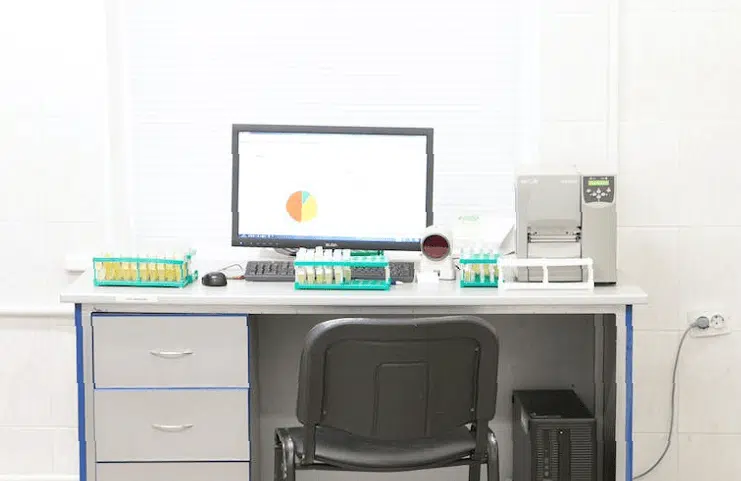Looking for the best new dermatology software system for your practice? Need to know the difference between EMR, EHR, PMS and analytics? We cover it all here.
Dermatology Software Review – Everything You Need to Know for Buying a New EMR, EHR and Practice Management System
In the fast-evolving landscape of healthcare technology, staying up to date with the latest advancements in dermatology software is a requisite for any successful practice. Physicians and physician practice managers must navigate through myriad options to select a system that aligns seamlessly with their operational needs, ensuring efficiency and improved patient care. This guide seeks to assist you in this vital task, providing a detailed exploration of the dermatology software market.
Identifying Core Needs
Before embarking on the search for a new system, it is imperative to identify the core needs of your practice. Consider the specific challenges faced in daily operations and prioritize functionalities that would address these issues effectively. By distinguishing must-have features from nice-to-have ones, you can create a criterion that is both comprehensive and tailored to your needs.

Dermatology EHR, EMR, Practice Management Software, and Analytics: The Pillars of a Modern Practice
It is indispensable for dermatology practices to leverage state-of-the-art software systems that bring a gamut of functionalities including Electronic Health Records (EHR), Electronic Medical Records (EMR), practice management software, and analytical tools. Let’s dissect each element to understand their roles, interoperability, and how they can revolutionize a dermatology practice.
Electronic Health Records (EHR): The Backbone of Patient Information
EHRs play a pivotal role in modern healthcare by providing a digital version of a patient’s paper chart. These are real-time, patient-centered records that make information readily available and secure to authorized users.
For dermatology practices, EHRs offer extensive benefits including easy access to patient histories, diagnostic details, and treatment plans, thus playing a crucial role in decision-making. Moreover, EHRs can facilitate seamless communication with other healthcare providers, enabling a collaborative and multidisciplinary approach to patient care.
Integration of EHR systems in dermatology practices not only optimizes workflow but also aids in regulatory compliance, a feature pivotal in maintaining the security and confidentiality of patient data. When considering a new dermatology software system, it is imperative to assess the EHR functionality critically to ensure it meets both the current and future needs of your practice.

Dermatology Electronic Medical Records (EMR): Enhancing the Precision of Medical Histories
While often used interchangeably with EHR, EMR systems offer a slightly narrower focus, essentially digitizing the medical and treatment history of patients. In the dermatology landscape, an EMR system would focus on documenting specific medical interventions over time, fostering precise and methodical record-keeping.
EMRs allow dermatologists to track data over time, easily identify patients due for preventive screenings, monitor patients’ parameters such as blood pressure and vaccinations, and improve the quality of care inside the practice. However, the EMRs are generally confined to the practice’s office, unlike EHRs, which have a more extensive sharing capability. See our best dermatology EMR software reviews for more in-depth information.
Dermatology Practice Management Software: Streamlining Operational Efficiency
Managing a dermatology practice involves juggling numerous administrative and financial tasks. From scheduling appointments to billing and reporting, practice management software serves as the administrative powerhouse, driving efficiency and streamlining operations.

Key features to look for in practice management software include scheduling, appointment reminders, billing, reporting, and insurance claims management. Furthermore, it should allow integration with EHR and EMR systems to facilitate cohesive and efficient practice operations.
For instance, when a physician inputs a new prescription in a patient’s EHR, the practice management software can automatically send this data to the billing department, streamlining the reimbursement process and reducing administrative burden. Thus, fostering a fluid and interoperable environment where various software systems work in harmony is the key to a successful dermatology practice.
Dermatology Software Analytics: Leveraging Data to Drive Decision-Making
In the modern digital age, the ability to harness the power of data analytics is a game-changer for any dermatology practice. Analytical tools can sift through the vast troves of data in EHR and EMR systems, and draw actionable insights to inform decision-making and strategy development.
These tools can aid in various analytical tasks such as predictive analytics, where patterns and trends are identified to help forecast future outcomes, to prescriptive analytics which offers specific recommendations for ways to handle potential future situations.
Moreover, analytics can support quality assurance by identifying potential areas of improvement, facilitating a continuous improvement strategy for your practice. It aids in population health management, risk management, and financial analytics, thus bringing a data-driven approach to various aspects of the practice.
By focusing on analytics, a dermatology practice can not only enhance patient outcomes but also streamline operations and improve financial health. A comprehensive dermatology software system should offer robust analytical tools, helping practices to leverage the full potential of their data.
Bringing it all Together: EHR, EMR, Practice Management & Analytics Dermatology Software
By intertwining the functionalities of EHR and EMR systems with practice management software and analytics, dermatology practices can forge a path to unprecedented efficiency and patient care quality. This symbiotic ecosystem fosters a data-driven, proactive, and highly efficient operational ethos, setting a new benchmark in patient care.
Therefore, while contemplating the investment in a new dermatology software system, it becomes indispensable to focus on these four pillars – EHR, EMR, practice management software, and analytics, scrutinizing potential options to find a solution that offers seamless integration and a full spectrum of functionalities.
The symbiotic functionality of EHR, EMR, practice management software, and analytics promises a roadmap towards an optimized, futuristic, and patient-centric dermatology practice. By acknowledging the individual strengths of these systems while also understanding their interconnected functionalities, you lay down a resilient foundation for a practice that promises not only growth but a revolutionized approach to dermatology care.
Integration with Existing Systems
Opt for software that integrates seamlessly with the existing systems in your practice. This synergy should facilitate a smoother workflow, aiding in processes such as patient data retrieval and report generation.
User-Friendly Interface
A user-friendly interface is not just a convenience; it is a necessity. The software should be intuitive, requiring minimal training for staff members. This will not only foster a more efficient working environment but also reduce the risk of errors in data handling.
Regulatory Compliance
Ensure the dermatology software is in compliance with all regulatory requirements, safeguarding your practice against potential legal ramifications. This entails adherence to standards such as HIPAA, promoting the secure handling of patient information.
Vendor Support and Training
Vendor support and training are crucial in the transitional phase and beyond. Adequate training can drastically reduce the learning curve, while ongoing support guarantees a swift resolution to any issues that may arise.
Cost Considerations
Budget is invariably a central concern. Beyond the initial purchase, consider the costs of implementation, training, and ongoing maintenance. A careful cost-benefit analysis will steer you towards a financially prudent choice.
Interoperability
In today’s interconnected healthcare environment, interoperability is key. The software should be capable of seamlessly exchanging information with other systems, fostering a collaborative approach to patient care.
Telemedicine Capabilities
Telemedicine has emerged as an indispensable tool in modern healthcare, enabling remote consultations and follow-up appointments. Ensure the software accommodates this functionality, equipped with features such as video conferencing and secure messaging.
Reporting and Analytics
A robust reporting and analytics module can transform raw data into actionable insights, assisting in informed decision-making and strategy formulation. From patient outcomes to financial metrics, the software should provide a comprehensive overview of your practice’s performance.
Mobile Accessibility
Mobile accessibility facilitates on-the-go access to vital information, fostering efficiency and responsive patient care. Evaluate the software’s mobile features, ensuring they meet the standards of security and functionality.
Customization Options
A degree of customization will allow the software to adapt to the unique requirements of your practice, rather than forcing your practice to adapt to the software. From templates to reporting formats, customization should be a focal point in your decision-making process.
Feedback and Reviews
While exploring various options, consider the feedback and reviews from other professionals in the field. Their firsthand experiences can offer invaluable insights, steering you away from common pitfalls and towards a solution that has proven successful in real-world settings.
Test Runs and Demonstrations
Before finalizing your choice, request test runs and demonstrations. This hands-on experience will offer a clear insight into the software’s capabilities and potential shortcomings, aiding in a well-informed decision.
Scalability
Lastly, consider the software’s scalability. As your practice grows, the software should be capable of evolving in tandem, accommodating increased workload without compromising efficiency.
Next Steps: Dermatology Software
Choosing a new dermatology software system is a complex yet fundamentally crucial task, directly influencing the quality of care delivered and the operational efficiency of your practice. By scrutinizing potential options through the lens of the considerations outlined above, you equip yourself to make a choice that is both informed and forward-thinking.
Armed with this knowledge, physicians and physician practice managers can navigate the multifaceted landscape of dermatology software with a discerning eye, selecting a system that not only meets the present needs but fosters growth and innovation in the ever-evolving field of dermatology.
Remember, the goal is to enhance not only the operational workflow but to elevate the standard of patient care delivered, heralding a new chapter of efficiency and excellence in your practice. The right dermatology software is more than a tool; it is a long-term partner in your practice’s journey towards success. Choose wisely, and you pave the path for a future of unparalleled growth and success.
Dermatology Software References
Dermatology 2.0- How the Internet is Changing us
Transforming Dermatologic Imaging for the Digital Era: Metadata and Standards
Machine Learning in Dermatology: Current Applications, Opportunities, and Limitations
Use of electronic medical records differs by specialty and office settings